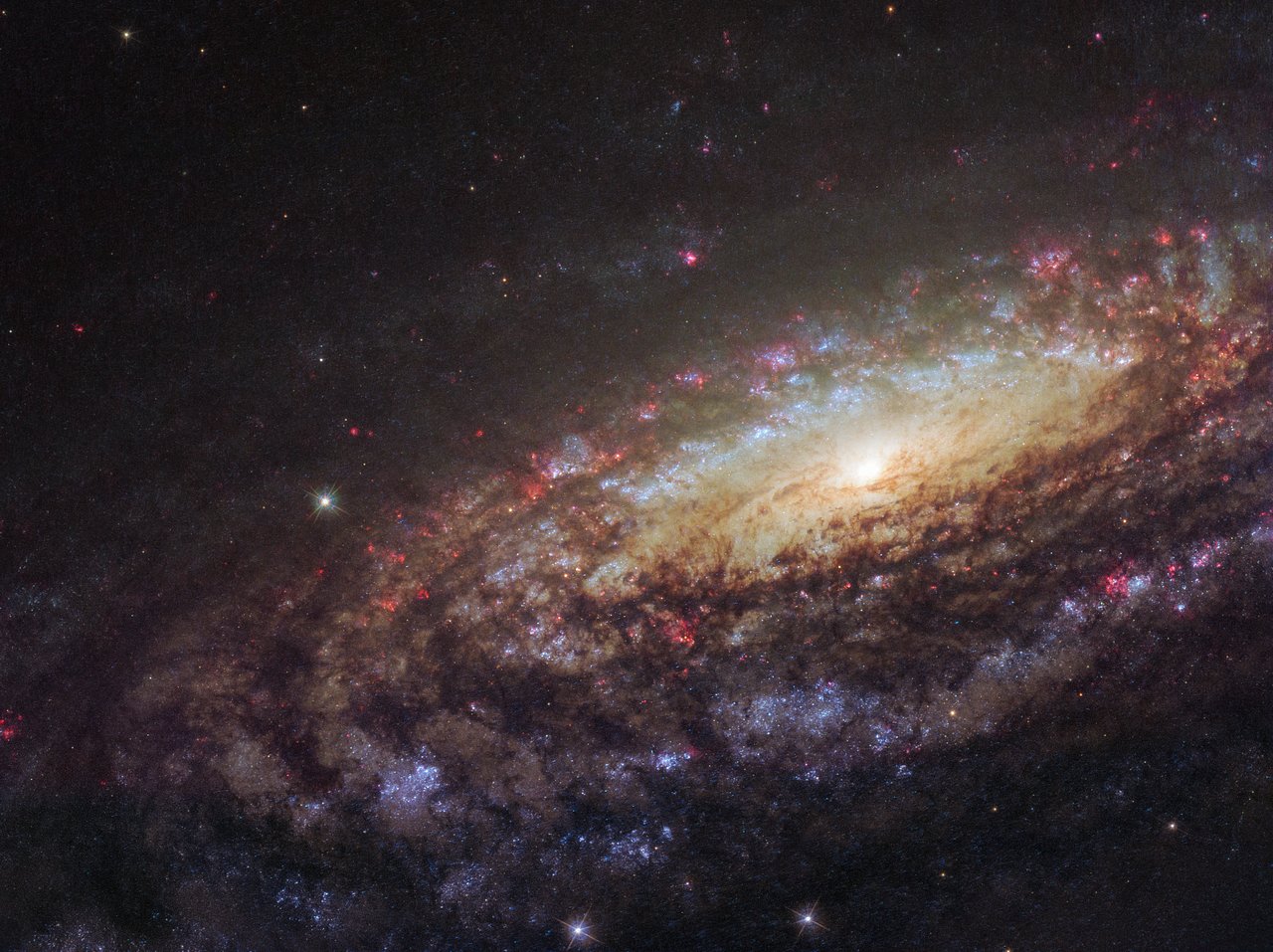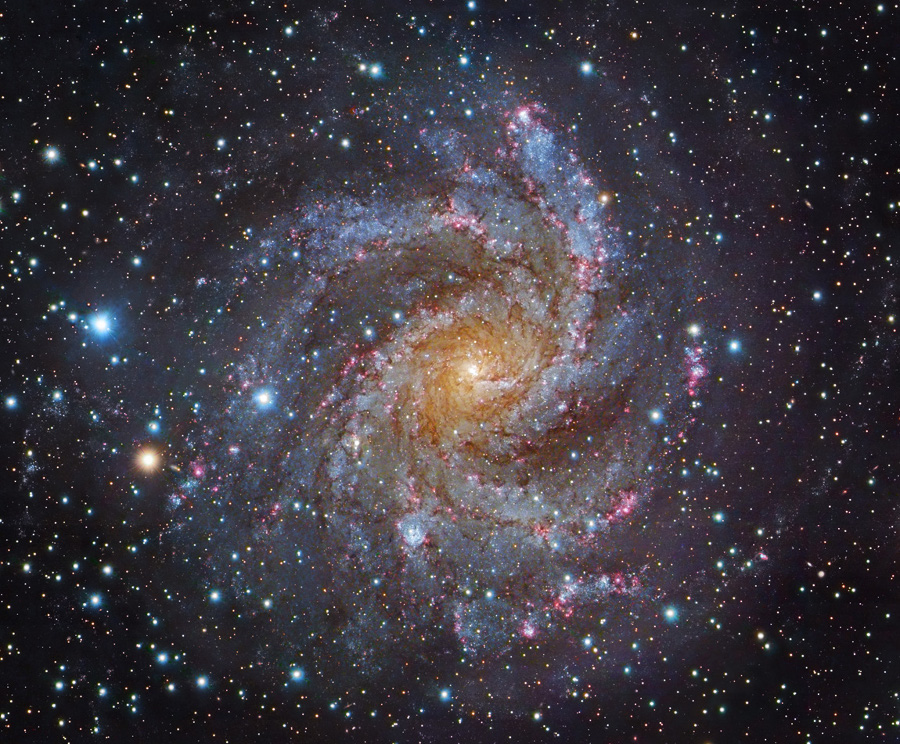
- Angry cat.png (36.44 KiB) Viewed 4251 times
Interesting combination of physics and cat torture there, Art. Particularly when the cat landed on the hard ground.
On a different note, today's APOD is both beautiful and interesting, and it doesn't look brand new to me. Why not? Well, because its colors are so nice and a lot of filters must have been used to produce it!
NGC 7331. ESA/Hubble & NASA/D. Milisavljevic.
The image that is today's APOD was released slightly more than two years ago, on January 29, 2018. I strongly applaud all the filters that were used for the image.
The ESA/Hubble page where this image was originally released lists no fewer than six filters that were used for this image, two ultraviolet ones, one blue, one yellow-green, one near infrared and one for Hα and NIII. As a result, we get a splendid image that does a superb job at detecting various stellar populations in NGC 7331.
(A more filter-economic example of a Hubble picture of a galaxy is
this one, of galaxy NGC 2985, for which only two filters were used. In the case of NGC 2985, the two filters were Hα and near infrared.)
NGC 7331 and the Deer Lick Group.
Vicent Peris (OAUV / PTeam), Gilles Bergond, Calar Alto Observatory.
My favorite portrait of NGC 7331 (and the Deer Lick Group of background galaxies) is the one at right, however. With my peculiar sense of aesthetics, I do find the colors very beautiful.
David Galadí-Enríquez wrote about Vicent Peris picture:
Color is, also, a very important side of this photograph. The chromatic balance has been obtained assuming that all the light coming from the main galaxy, as a whole, is white. This reference allows to distinguish which parts of NGC 7331 are bluer or redder. This also makes possible to compare the hue of the main galaxy with that of its smaller neighbors and background objects.
So the colors of the Vicent Peris picture are "relative" compared to a "white standard". The colors emanating from various parts of the galaxy are either bluer or redder than the total light of the galaxy.
NGC 7337 of the Deer Lick Group.
Vicent Peris (OAUV / PTeam), Gilles Bergond, Calar Alto Observatory.
I highly recommend
this page, which discusses details of the Vicent Peris picture of NGC 7331. Among other things, you can see two closeups of galaxies in the Deer Lick Group, of which the one at left is the most stunning. At least I think so.
Ann
 NGC 7331 Close Up
NGC 7331 Close Up



